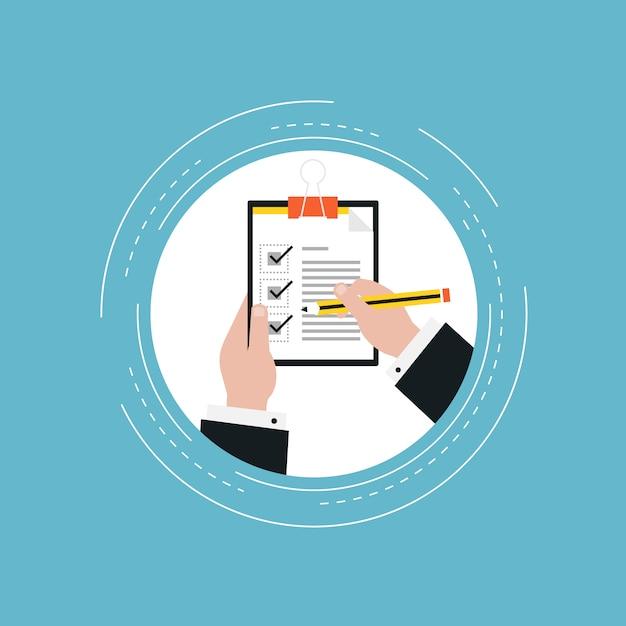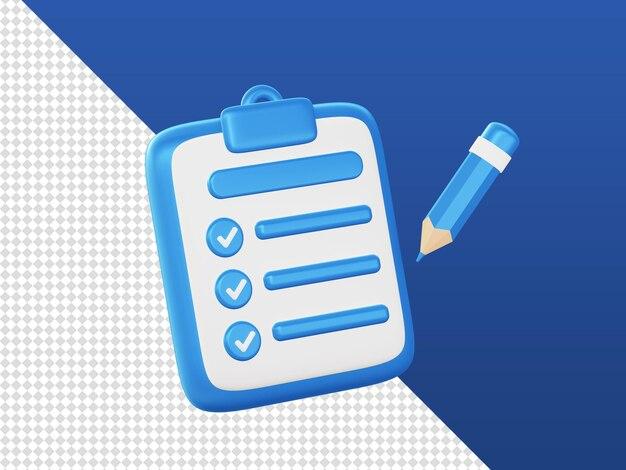Imagine you have a million things to do, from grocery shopping to completing work tasks, and you don’t want to miss anything important. What do you do? Well, you make a checklist, right?
Checklists have been around for ages, helping us stay organized and ensuring that we don’t overlook crucial details. But did you know that checklists can also play a vital role in data collection? That’s right! The checklist method of data collection is a powerful tool used across various fields, from employee performance evaluation to assessing children’s learning.
In this blog post, we’ll dive deep into the world of the checklist method of data collection. We’ll explore its definition, applications, advantages, and more. So, if you’re ready to learn how checklists can revolutionize the way you collect and analyze data, let’s get started!

What is the Checklist Method of Data Collection?
The checklist method of data collection is a tool that researchers use to systematically gather information by creating a list of specific items or criteria and then checking them off as they observe or assess a particular situation or phenomenon. It is like having a to-do list, but instead of groceries or daily tasks, it focuses on gathering data.
How Does It Work
The checklist method involves developing a checklist of items or questions that are relevant to the research objectives. This checklist acts as a guide or a roadmap for the researcher during data collection. It helps ensure that no important information is missed or overlooked.
An Ode to Checklists
Ah, checklists! The trusty companions of the organized and the forgetful alike. They have saved us from the embarrassment of forgetting our keys or leaving the stove on. And now, they come to the rescue of researchers too! With a checklist in hand, data collection becomes a breeze, like riding a bicycle downhill with the wind in your hair.
Benefits and Uses
Why choose the checklist method, you ask? Well, let me tell you, my curious friend. The checklist method is popular among researchers for several reasons. First and foremost, it provides structure and consistency to the data collection process. It ensures that all relevant data points are considered, leaving no stone unturned.
Furthermore, the checklist method allows for easy comparison and analysis of data across different cases or participants. It enables researchers to identify patterns, trends, or anomalies in the data without getting lost in a sea of information. Talk about efficiency!
Where Can It Be Applied
The beauty of the checklist method lies in its versatility. It can be applied in various research settings and disciplines. Whether you’re studying human behavior, conducting a survey, or observing natural phenomena, the checklist method can be your trusty sidekick.
From healthcare professionals assessing patient symptoms to social scientists observing classroom dynamics, checklists can be tailored to suit the specific needs of different research endeavors. The possibilities are as endless as a never-ending game of tic-tac-toe.
Checklist Method vs. Other Data Collection Techniques
Now, you might be wondering how the checklist method stands against other data collection techniques. Well, my friend, every method has its strengths and limitations. The checklist method may not be the perfect fit for every research question or situation, but it certainly has its perks.
Compared to interviews or surveys, the checklist method offers a more structured approach, reducing potential bias and subjectivity. It also allows for quicker data collection, especially when dealing with large sample sizes. And let’s not forget the simple satisfaction of ticking off items on a list, like a victorious conqueror of data.
So there you have it, my inquisitive reader. The checklist method of data collection is a powerful tool in the arsenal of researchers worldwide. With its structured approach, versatility, and efficiency, it ensures that no valuable data slips through the cracks. So next time you embark on a research endeavor, consider adding a checklist to your toolbox. Happy data collection, my fellow explorers!
Keywords: checklist method of data collection, how does it work, benefits and uses, where can it be applied, checklist method vs. other data collection techniques

FAQ: What is the Checklist Method of Data Collection?
What is the checklist method used for employee performance evaluation
The checklist method of data collection is commonly used to evaluate employee performance. It involves creating a list of specific criteria or behaviors that supervisors or managers observe in the workplace. This checklist helps assess the employee’s job performance based on predetermined factors such as punctuality, quality of work, productivity, and adherence to company policies. By using a checklist, employers can objectively track and analyze employee performance to make informed decisions.
What are the basic needs of a child
Every child has basic needs that must be met for healthy development. These needs include:
1. Physical Needs
Children need proper nutrition, access to clean water, adequate sleep, and a safe environment to thrive physically.
2. Emotional Needs
Children require love, care, and emotional support from their caregivers. They thrive when provided with a nurturing and secure environment.
3. Intellectual Needs
Children have an innate curiosity and need opportunities to learn and explore. Providing them with stimulating activities and educational resources ensures their intellectual growth.
What should every child learn in preschool
Preschool education plays a crucial role in a child’s development. It helps children acquire essential skills and knowledge that prepare them for elementary school and beyond. Some key areas of learning in preschool include:
1. Social Skills
Preschool teaches children how to interact with peers and adults, fostering socialization and emotional development.
2. Language and Communication
Children learn how to express themselves effectively, build vocabulary, and develop early literacy skills through storytelling and other language-based activities.
3. Fine and Gross Motor Skills
Preschool activities encourage the development of fine motor skills, such as holding a pencil, as well as gross motor skills, like running and jumping.
What should a checklist include
A checklist should be comprehensive and cover all the necessary aspects of the task or evaluation at hand. In general, it should include:
1. Clear Objectives
Define the specific goals and outcomes you want to achieve through the checklist.
2. Detailed Tasks or Criteria
List the specific tasks or criteria that need to be observed or evaluated, providing clarity for the person using the checklist.
3. Space for Notes or Comments
Include space for additional comments or notes to provide a more comprehensive assessment or capture any specific observations.
4. Important Deadlines or Timelines
If applicable, include deadlines or timelines to ensure tasks are completed within the desired timeframe.
What are the 6 learning skills
The 6 learning skills are essential abilities that individuals need to develop for effective learning and personal growth. These skills are:
1. Critical Thinking
Being able to analyze information, evaluate ideas, and make informed decisions based on evidence.
2. Communication
Expressing ideas, thoughts, and feelings clearly, both verbally and in writing, while actively listening to others.
3. Collaboration
Working effectively and harmoniously in groups, sharing responsibilities, and respecting diverse perspectives.
4. Creativity
Thinking outside the box, generating innovative ideas, and finding unique solutions to problems.
5. Resilience
The ability to adapt, bounce back from setbacks, and persevere in the face of challenges.
6. Self-Direction
Taking initiative, setting goals, and managing time effectively, while being proactive and responsible for one’s own learning.
What is the behavioral checklist method
The behavioral checklist method is a data collection technique used to observe and record specific behaviors. It involves creating a checklist of behaviors that an observer looks for during an observation or evaluation process. This method provides a standardized way to gather data on behaviors, making it easier to analyze and compare results.
When should you use a checklist
Checklists are valuable tools in various situations. Here are a few instances when using a checklist can be beneficial:
1. Task Management
When handling complex or multi-step tasks, a checklist ensures that no important steps are missed or forgotten.
2. Quality Control
In quality control processes, checklists help ensure that products or services meet specific standards or requirements.
3. Evaluation and Assessment
Checklists are useful when evaluating employee performance, conducting audits, or assessing compliance with regulations or protocols.
What are three employee comparison methods
When comparing employee performance, three common methods used are:
1. Ranking
Ranking involves assessing employees against each other and creating a ranked order based on their performance. However, this method can create unhealthy competition and may overlook individual strengths and weaknesses.
2. Rating
Rating involves assigning a numerical value or rating to each employee based on predefined criteria. This method allows for more detailed feedback and differentiation but can be subjective if not properly defined.
3. Forced Distribution
Forced distribution requires assigning a predetermined percentage of employees into specific performance categories, such as top performers, average performers, and underperformers. This method can help identify high and low performers but may not account for individual circumstances or growth potential.
How do you evaluate children’s learning
Evaluating children’s learning involves various methods and approaches. Here are a few commonly used techniques:
1. Formal Assessments
Formal assessments include standardized tests, quizzes, or exams that measure a child’s knowledge in specific subjects or areas.
2. Observations
Observations allow educators to assess children’s behavior, interactions, and skills in natural learning environments, providing valuable insights into their development.
3. Portfolios
Portfolios compile samples of children’s work, showcasing their progress and achievements over time. This method offers a holistic view of their abilities and growth.
4. Self-Assessment
Encouraging children to reflect on their own learning and progress, and assessing their understanding and self-awareness.
What are the advantages of a checklist
Using a checklist offers several advantages in various contexts:
1. Improved Efficiency and Accuracy
Checklists help ensure that tasks or evaluations are conducted consistently and thoroughly, reducing errors and omissions.
2. Standardization
By following a predefined checklist, consistency in evaluations or processes can be maintained across different individuals or teams.
3. Increased Accountability
Checklists provide a clear record of completed tasks or observations, enabling accountability for performance or compliance.
4. Easy Reference and Training
Checklists serve as a quick reference guide, assisting in training new employees or ensuring adherence to standardized procedures.
5. Streamlined Communication
Checklists help facilitate clear communication and understanding of expectations, reducing confusion and misinterpretation.
With the checklist method of data collection, you can efficiently evaluate employee performance, monitor children’s learning, or streamline various processes, leading to better outcomes and increased productivity. Remember to tailor the checklist to suit your specific needs and objectives. Happy checklisting!
Disclaimer: This blog post was generated by an AI language model and proofread by a human writer.
